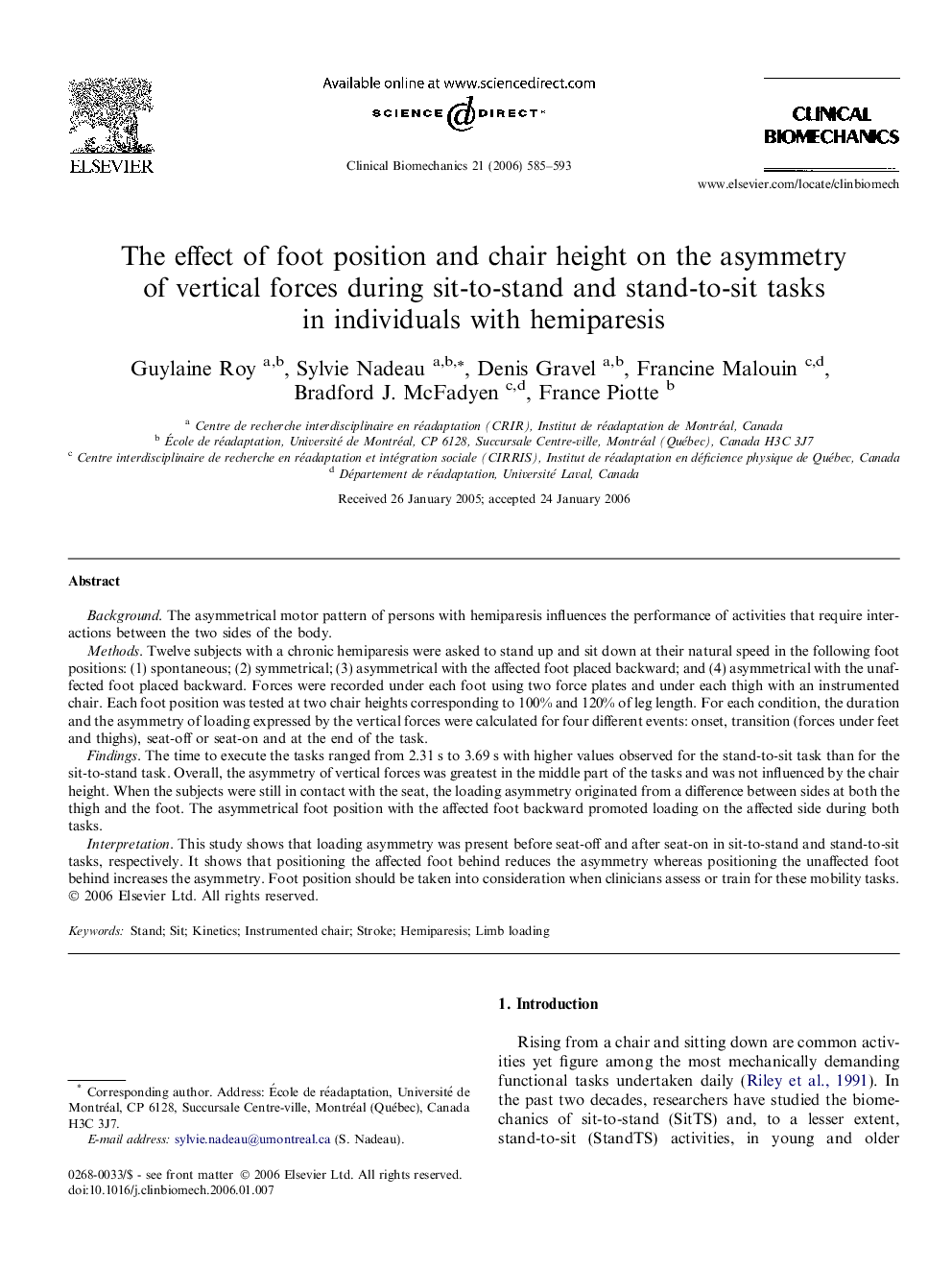| کد مقاله | کد نشریه | سال انتشار | مقاله انگلیسی | نسخه تمام متن |
|---|---|---|---|---|
| 4051564 | 1264996 | 2006 | 9 صفحه PDF | دانلود رایگان |

Background. The asymmetrical motor pattern of persons with hemiparesis influences the performance of activities that require interactions between the two sides of the body.Methods. Twelve subjects with a chronic hemiparesis were asked to stand up and sit down at their natural speed in the following foot positions: (1) spontaneous; (2) symmetrical; (3) asymmetrical with the affected foot placed backward; and (4) asymmetrical with the unaffected foot placed backward. Forces were recorded under each foot using two force plates and under each thigh with an instrumented chair. Each foot position was tested at two chair heights corresponding to 100% and 120% of leg length. For each condition, the duration and the asymmetry of loading expressed by the vertical forces were calculated for four different events: onset, transition (forces under feet and thighs), seat-off or seat-on and at the end of the task.Findings. The time to execute the tasks ranged from 2.31 s to 3.69 s with higher values observed for the stand-to-sit task than for the sit-to-stand task. Overall, the asymmetry of vertical forces was greatest in the middle part of the tasks and was not influenced by the chair height. When the subjects were still in contact with the seat, the loading asymmetry originated from a difference between sides at both the thigh and the foot. The asymmetrical foot position with the affected foot backward promoted loading on the affected side during both tasks.Interpretation. This study shows that loading asymmetry was present before seat-off and after seat-on in sit-to-stand and stand-to-sit tasks, respectively. It shows that positioning the affected foot behind reduces the asymmetry whereas positioning the unaffected foot behind increases the asymmetry. Foot position should be taken into consideration when clinicians assess or train for these mobility tasks.
Journal: Clinical Biomechanics - Volume 21, Issue 6, July 2006, Pages 585–593